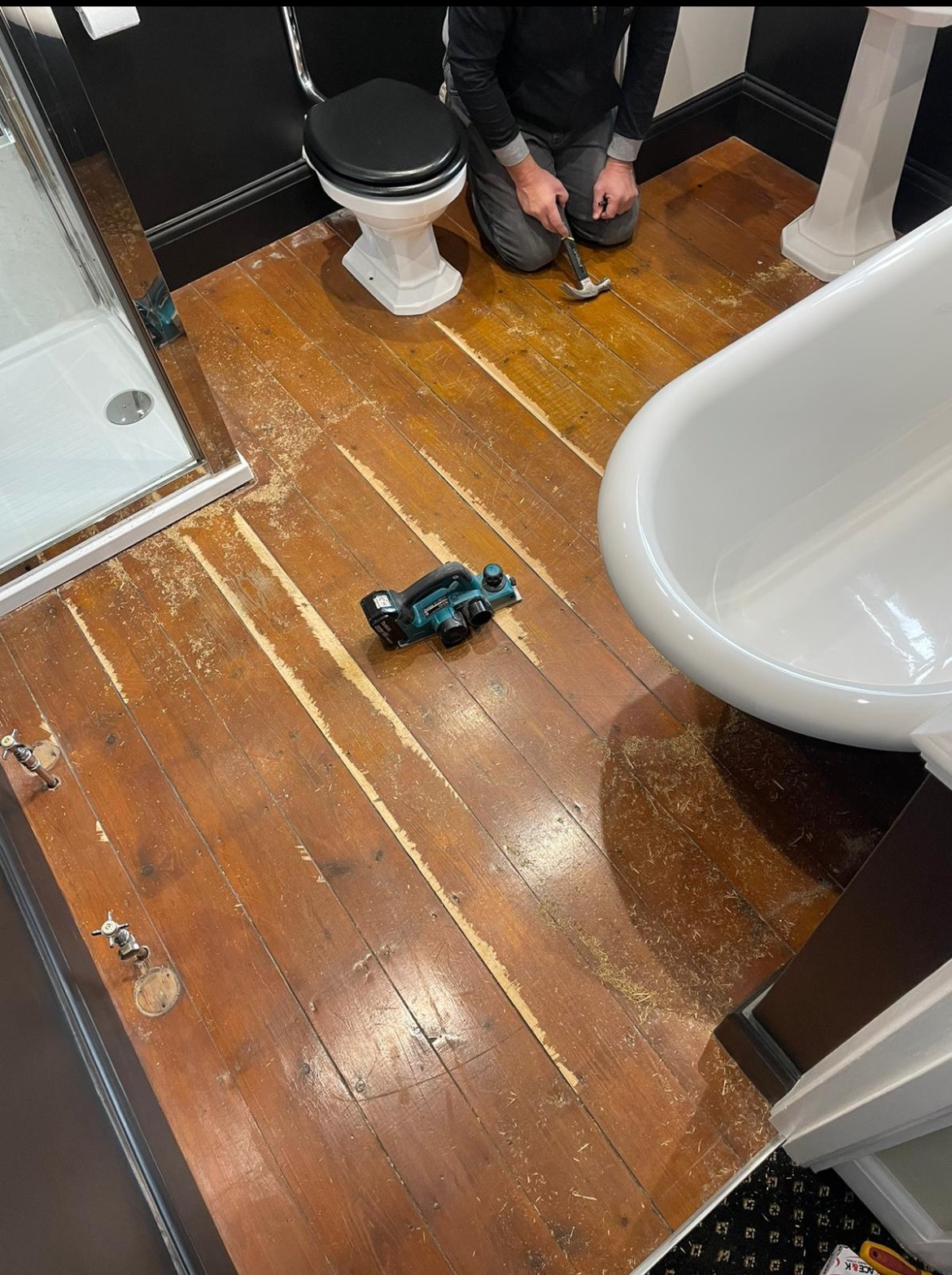Ask any fitter who’s been in the trade a few years, and they’ll tell you — there’s no such thing as a “cheap floor” that lasts. Whether it’s LVT click flooring, laminate, real wood, or carpet, the price you pay upfront is only part of the story. What really matters is how long it lasts, how well it’s installed, and what it costs you down the line when corners get cut.
The Problem with Going Cheap
When people choose the lowest-priced flooring, they often think they’re saving money. But on site, you quickly learn that low-quality materials and poor installation are what cause most flooring failures — warping, lifting, bubbling, or wear within a year or two.
Cheap LVT glue down & click flooring, for instance, might look the part at first glance. But once it’s down, you can feel the difference. Thin boards mean weak joints. Click systems that don’t properly lock start to separate as the floor expands and contracts. Before long, you’ve got gaps that trap dirt or even cause edges to chip.
The same goes for budget laminate flooring. On paper, it’s a bargain. In reality, the cheaper laminates use soft HDF cores that swell the minute moisture gets in. A single spill or damp subfloor can make the boards lift and split. That’s why professionals always talk about laminate flooring durability — because the cheaper stuff simply doesn’t have it.
Real Wood Floors — Quality Over Quantity
Real wood floors are a different story, but they still suffer when you try to save too much. Solid oak or engineered planks are built to last decades, but only if they’re properly finished and installed. Cheap, thin-veneered engineered wood can’t be sanded more than once, and poorly milled boards don’t sit flush.
Professionals know that the timber grade, the wear layer thickness, and the finish all determine how that floor will look after five years of foot traffic. Saving money upfront often means paying again later — either in refinishing costs or a full replacement.
Carpet — Soft but Short-Lived When It’s Budget
Then there’s budget carpet. It’s easy to see the attraction: quick to fit, low material cost, and an instant refresh for a room. But cheap carpets use low-density fibres and weak backings. After a year of use, you start to see flattening, fraying at the edges, and fading near windows.
Even the best carpet fitter can’t make a thin, poor-quality carpet feel plush. And once it starts to lose its pile, there’s no bringing it back. It’s a perfect example of how “buy cheap, buy twice” applies to flooring.
Installation Is Half the Battle
A lot of what homeowners think is product failure actually comes down to installation. LVT click flooring that’s not laid on a level subfloor will start to move and click underfoot. Laminate that’s installed without expansion gaps will bow or lift. Even real wood floors can cup or crown if humidity isn’t managed before and after fitting.
That’s why professionals stress subfloor prep and acclimatisation. You can buy the most expensive materials in the shop, but if you rush the job or skip the prep, you’ll still get problems.
The False Economy
Let’s say you spend £10 per square metre on a cheap laminate that lasts two years before it fails, versus £20 per metre on a higher-grade product that lasts ten. Over a decade, the “expensive” floor actually costs you less.
Add in the time, labour, and disruption of ripping out and refitting, and the numbers really don’t lie. Flooring is one of those trades where quality pays you back — not in the first month, but in the long run.
Professional Standards and Honest Advice
From a fitter’s point of view, there’s nothing more frustrating than being asked to install bargain flooring on a poor subfloor and then being blamed when it fails. That’s why good tradesmen always explain the pros and cons upfront.
When clients ask, “Is this laminate okay?”, the honest answer is — it depends what you expect. If you want a quick fix for a rental, budget options might do the job. But if you want lasting performance, soundproofing, moisture resistance, and a floor that still looks sharp in five years, step up the quality.
Conclusion
Cheap flooring might save you money today, but you’ll pay for it tomorrow — in time, in stress, and in replacements. Whether it’s LVT click flooring, laminate, real wood floors, or budget carpet, the truth is simple: quality materials and professional fitting always win out in the long run.
So before choosing the lowest price tag, think about what that floor needs to put up with — heavy foot traffic, kids, pets, moisture, or heating. Spend wisely once, and you’ll walk on solid ground for years to come.



